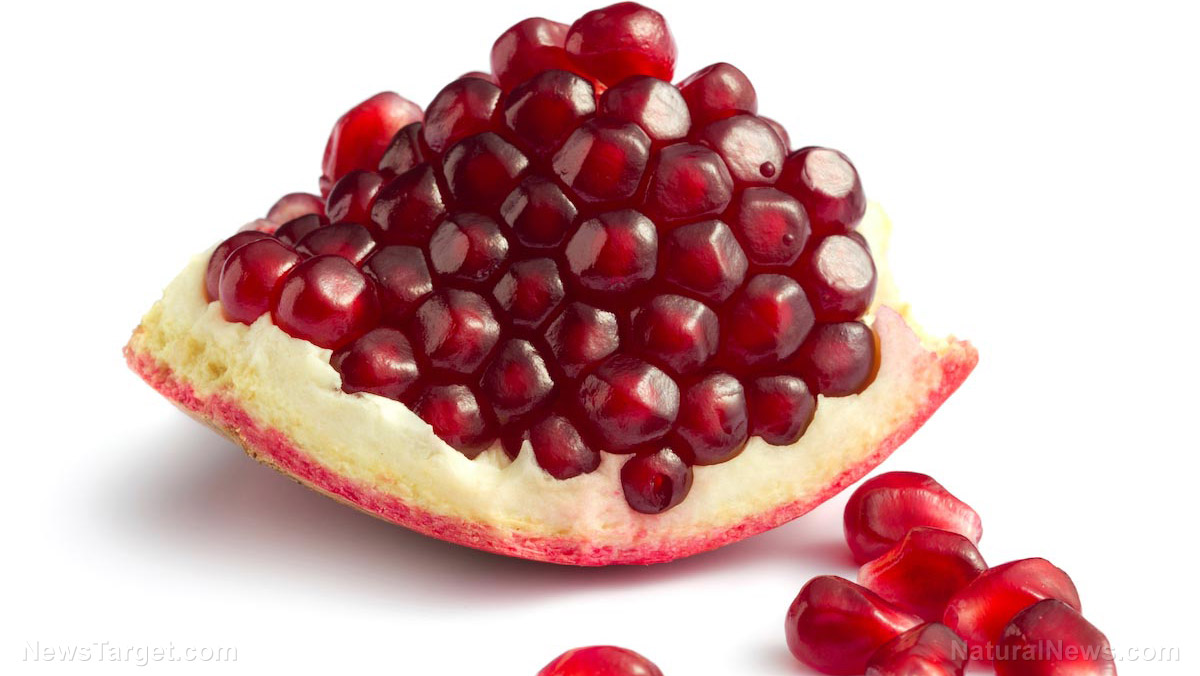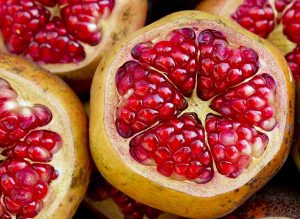
In his Weekly Health Tip video, Dr. Marco Caravaggio talks about just some of the amazing ways that pomegranates have in a person's body.
Watch the full episode from Brighteon.com here:
People familiar with pomegranates know how taxing opening one can be, but here are some great things about the fruit that could make the task well worth the effort.
- It's filled with phytochemicals. The arils (the seed pod inside a pomegranate) are chock-full of phytochemicals, including:
- Cyanidin -- A compound with potent antioxidant properties and is known to prevent diabetes, obesity, and inflammation.
- Ellagic acid -- Tests using cancer cells of the breast, esophagus, skin, colon, prostate, and pancreas have shown that this phytochemical is an effective anti-cancer agent. It's also known to have antiviral and anti-bacterial properties. (Related: Pomegranate Juice Fights Prostate Cancer when Medical Therapy Fails.)
- It's a great source of anthocyanins. It's easy to identify if a fruit or a vegetable has anthocyanins -- just look at their color. Richly colored fruits and vegetables -- like blueberries, beets, and pomegranates -- are great sources of the phytochemical. Multiple studies have shown that anthocyanins improve cardiovascular health and even reduce the risk of cancer and inflammation. It's not all rainbows and butterflies when it comes to anthocyanins, however: It has the same composition of chemicals that people use in dying fabrics, which makes it a chore to clean.
- It detoxifies the body. Pomegranates help get rid of the toxins inside the body, pulling them out so they can be easily flushed out. A great example of this is heavy metals: Pomegranates lift these from the body and replace them with antioxidants to prevent damage. It also works for cysts, calcifications, stones, and ganglions -- with the phytochemicals in pomegranates breaking them down and flushing them out of the body.
- It improves red and white blood cell production. Pomegranate arils are rich sources of iron, which helps increase the production of red blood cells. The antioxidants, in addition, stimulate white blood cells and increase their efficiency.
- It's loaded with fiber to regulate sugar absorption. If you think pomegranates are a sugar bomb, think again -- it's rich in fiber that helps slow down the conversion of sugar to glucose, which, in turn, allows for a more constant energy boost.
- It gets rid of unwanted toxic chemicals. Eating pomegranates can even help you get rid of toxins you didn't even know you had, like pesticide residues from other foods you've been eating -- especially DDT.
Cracking up a pomegranate, the right way

For everyone who's fallen victim to pomegranate stains, here's an easy way to cut open the intimidating fruit without looking like a crime scene afterward. (h/t to Delish.com)
- Cut around the base of the "flower" (the little stem on top of the fruit) and remove it.
- Use a paring knife to score the sides of the pomegranate. Make sure to cut between the ridges of the fruit -- an easier way is to follow the white areas that divide the arils and start there.
- Pull the sections from the center outward, much like how you will an orange.
- Gently scrape the seeds from the white membrane.
Follow Dr. Marco's Weekly Health Tips, only at Brighteon.com.
Learn more about the other ways that pomegranates can boost your health at Food.news.
Sources include:
Please contact us for more information.























